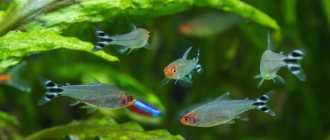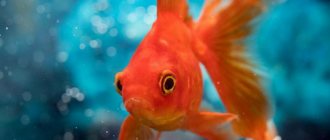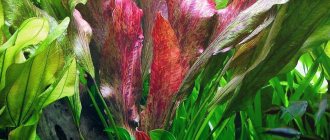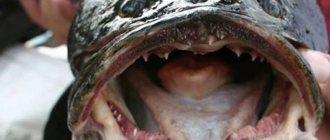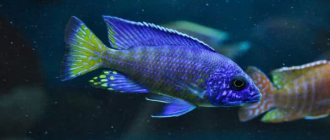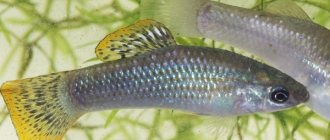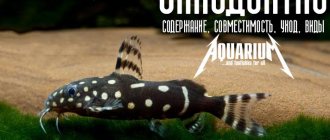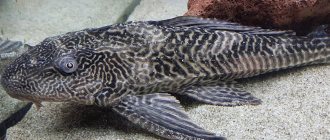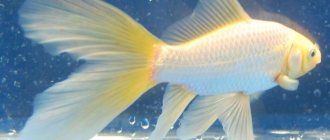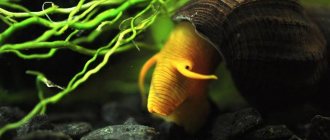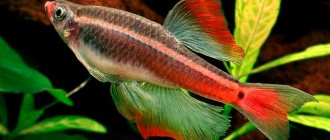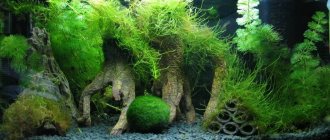Description
Discus fish is a species of fish from the Cichlid family of the Perciformes order. They are most widespread along the Amazon River. The average size of the fish is 15–20 cm, but some individuals grow up to 25 cm.
Appearance
Discus are laterally compressed. Because of their flat and round body, which looks like a disk, the fish got their name.
View this post on Instagram
Viele Möglichkeiten die Vielfallt unserer STENDKER-Diskusfische zu genießen. Träume realisieren, Ruheoasen schaffen. Fragen Sie Ihren Fachhänder. Unsere STENDKER-Fachhändler für DEUTSCHAND finden Sie hier: https://www.diskuszucht-stendker.de/de/Haendler/Haendlerliste/ WELTWEIT hier: https://www.diskuszucht-stendker.de/de/Haendler/Haendler_Ausland/ unsere Zertifizierten Stendker-fachhändler Hier: https://www.diskuszucht-stendker.de/de/haendler/zzertifizierte_haendter/ #diskusuchtstendker #STendkerdiskus #stendinDendk ER #stendkerDiscus #Discus #Diskus #Discusbreedertendker #SYMPHYSODON, #Tropicalfish #Discusfish #freshwaterfish #cichlid # discuslovers #diskusfisch #stendkerdiskuszucht
A post shared by Diskuszucht STENDKER (@angelika.stendker) on Oct 27, 2022 at 6:01am PDT
Body color depends on the variety. Now there are dozens of color variations. Color ranges from brown to gold and blue. The bodies of fish are covered with light or dark stripes, spots, sparkles, and lines.
The dorsal and anal fins are well developed, rounded at the ends, and decorated with different colors. The caudal fin is small.
Lifespan
Life expectancy depends on the type and size. Small-sized fish can live 3–5 years, but there are also long-livers whose life expectancy is 16–20 years.
What to feed discus fish?
It is best to choose animal food for the diet of such fish, which can be frozen or live. Tubifex, bloodworms, coretra and others are suitable for feeding discus. In pet stores you can find special food for discus dogs, and many also prepare minced meat, which includes different types of meat, seafood, vitamins, vegetables, and so on. When carrying out care, keep in mind that it is important to choose the right dosage so that no protein waste remains at the bottom, which releases ammonia and nitrates.
Feeding discus fry
A few days after birth, the young move onto their parents to feed on their skin secretions. If the parents are calm, then there is no need to rush into additional feeding, since a healthy individual can feed its offspring for up to 10 days. If the aquarium is inhabited by weak discus fish, then you should start feeding the fry on day 3-5. It is better to give preference to Cyclops nauplii and rotifers. The rules of care indicate that after a few days you can use artemia for food, which should be given often, but in small portions.
Kinds
There has been confusion for a long time regarding the classification of discus species. Initially, a species was discovered that was named after the discoverer Heckel. Later, green and blue inhabitants were discovered, and recently a brown variety was discovered in nature. Artificially bred individuals are distinguished by a variety of colors and also differ in species.
Cobalt
This species is predominantly blue in color with dark, shiny spots and stripes on the fins and body. It is often confused with the turquoise subspecies, but upon closer examination it becomes clear that cobalt is a shade of blue-blue and turquoise is green.
Green
It was discovered in 1904 by Pellegrin. Natural habitat is the center of the Amazon and the Putumayo River. The body color is greenish with yellow or gray shades and dark stripes from the back to the abdomen.
Heckel
Lives in tributaries of the Amazon. The color is cream with light horizontal stripes and one or more dark vertical stripes.
Blue
A natural subspecies that lives in the tributaries of the Amazon. It differs from others in its sky-blue color. The Blue Diamond breeding form is the most prized, but dye feed is often used to brighten the color.
Red
The color of this variety ranges from pale brown to brick. The most striking form of selection is “Red Schilingmanna”, the fiery red color of which is achieved by coloring additives and hormonal preparations. Without them, in the 2nd–3rd generation the color fades and becomes similar to the brown subspecies.
Pigeon blood
This name confuses many people, because they expect to see gray-blue fish, but what they get are yellow-pink pets with white spots. This subspecies received the name “Pigeon Blood” not because of its resemblance to pigeons, but because of the name of the “Pigeon Blood” ruby, popular at that time, because the color of the stone is similar to the deep red-orange color of the fish’s eyes.
Turquoise
This color variation is best known to aquarists in our country, because they were imported back in 1970 from Europe. On the body of the fish, spots and stripes are colored turquoise. In purebred individuals, the front part of the body is also colored turquoise.
Gold
The artificially bred species is characterized by a golden color. Particularly prized are individuals devoid of dark pigmentation - almost pure gold, for example, the “Super Gold” variation, which is especially beautiful.
Habitat in nature
Homeland in South America: Brazil, Peru, Venezuela, Colombia, where they live in the Amazon and its tributaries. They were first introduced to Europe between 1930 and 1940. Earlier attempts were unsuccessful, but provided the necessary experience.
Previously, this species was divided into several subspecies, however, later studies have abolished the classification.
There are currently three known species that live in nature: green discus (Symphysodon aequifasciatus), Heckel discus or red discus (Symphysodon discus). The third species, described relatively recently by Heiko Blecher, is the brown discus (Symphysodon haraldi).
Content
Aquarists have heard about the complex, difficult maintenance and care of discus fish. There is some truth to this - for beginners this is not the best option for a first pet. But more experienced hobbyists should not be afraid to get this fish, because if you know the peculiarities of keeping discus fish in an aquarium, then many difficulties will be avoided.
Aquarium
Due to their rather large size, the fish will require a large amount of water and a sufficient aquarium volume, from 200 liters for a couple and more than 600 liters for a flock of 6 pets. The size of the tank should be tall and long. You should not share an aquarium with other species; it is better to purchase a separate one.
Water parameters
These pets are very picky about the water temperature - it should not fall below 27 degrees, preferably it should be between 29-32 degrees. Soft and slightly acidic water is preferred: hardness – 6.0–6.6, acidity – 10–16 dGH. Pets are sensitive to nitrate levels in water.
Plants
The vegetation in the tank should not be too lush. Buy plants that can tolerate high temperatures and can filter water. For example, Anubias, Vallisneria.
Priming
Almost any soil is suitable: sand, stones, pebbles, special substrate. The main condition is the absence of sharp corners and notches on the ground. Pets will feel quite good even in the complete absence of soil mixture.
View this post on Instagram
#Repost @z_kraevskaya with @get_repost ・・・ My favorite fish is very beautiful and very shy ☺️ But at the same time, I found out that this is a completely harmless creature, not even harmless at all?? . Initially, I had 2 discus ??, but over time I began to notice pressure from this handsome man towards his tailor or tailor ??♀️ (as expected upon purchase). Ultimately, the Tsar (that’s what I call him now) outlived his life partner. He beat him! ??Beat in the literal sense of the word. They began to live in different corners of the aquarium, but when the Tsar was not in the mood, he swam up and began to chase him, and when he caught up, he bludgeoned with all his might. I gave the poor fellow to my dad, but, unfortunately, it was too late ⚰️. And now this monster is beating up little fish, but, fortunately, it’s very difficult to catch up with them))) So does one little fish live?? I was told I need 5 pieces so that they don’t fight, and the aquarium is very small - only 2???♀️ So now let him live alone if he doesn’t know how to behave?☝? #discus killer #discus #mylove?
A post shared by Zlata Kraevskaya (@zlata_kraevskaya) on Mar 23, 2018 at 1:39pm PDT
Equipment
The tank is equipped with a powerful filter, because pets are not known for being clean. You will also need a compressor for aerating the water, a heating device and a thermometer.
Lighting
Discus fish are not demanding on lighting, but it should not be too bright; it is better to use weak and diffused light.
Keeping discus fish in an aquarium
Discus fish are one of those fish that can survive in the most extreme conditions in the wild, but are incredibly capricious in an aquarium. Yes, in their native Amazon they live in very warm and fairly muddy water under steep banks and tree roots, and in an artificial environment they can die from the slightest change in the composition of the water or its temperature. So, if you decide to have these living gems, be prepared for the fact that a lot of effort will be required.
Photo: globallookpress.com
Due to the intensive cleaning required in a discus aquarium, many breeders do not recommend putting any kind of soil on the bottom. But it’s still worth putting some beautifully curved driftwood and planting more plants.
Feeding
Quite picky. In the natural environment, they feed on underwater insects and their larvae, but species artificially bred in aquariums are more picky about food and will not feed on bloodworms, brine shrimp or tubifex.
Discus breeders prepare special minced meat to feed their pets. Each experienced aquarist has his own recipe. The main thing is that it contains all the necessary microelements and vitamins that are present in balanced dry food. It is most often made from hearts (beef or chicken), seafood (mussels, fish meat), vegetables (carrots, cucumbers) and herbs. Live and frozen ingredients can be used.
View this post on Instagram
#Symphysodon #Symphysodon_discus #Discus #Discus
A post shared by ?? ??? ????????? (@scipio_0019) on Apr 2, 2015 at 1:30am PDT
Feeding is done twice a day, but discus can tolerate no food for 1-3 days. Remains of food after feeding are immediately removed from the water.
Feeding and diet of discus fish
Food for discus Tetra
Discus fish are predatory fish and in their natural habitat feed mainly on small fish, fry and larvae, various aquatic insects and invertebrates.
There are no difficulties with feeding discus fish in aquariums. Healthy fish are not picky and readily eat food offered to them. Discus fish should be fed in small portions 2-3 times a day.
To maintain the rich coloration of discus fish, food must be varied. You need to be especially careful when handling live worms, because... they can be carriers of various infections.
Vitamins play an important role in the full development of discus fish: vitamin A - responsible for the processes of regeneration and growth; vitamins B2, B6, B12 - are responsible for the development of color and vitality, also help in the breakdown of carbohydrates and converting them into energy; vitamin C - responsible for maintaining growth and healthy bone tissue (deficiency leads to pathological development of the gills). We recommend using specialized food for discus fish, which takes into account all their gastronomic preferences and, in fact, is the key to their health. For example, such as Tetra Discus.
Feeding Discus
It should be noted that when purchasing any dry food, you should pay attention to the date of its manufacture and shelf life, try not to buy food in bulk, and also store the food in a closed state - this will help to avoid the development of pathogenic flora in it.
Compatibility
The species is compatible with many fish due to its completely peaceful and non-aggressive temperament. But discus fish are often kept in a separate aquarium due to their heat-loving nature. Only a small number of fish consider this temperature suitable, so it is better to have its own aquarium for each species.
Sharing with active and territorial fish is not recommended. Often discus and angelfish are considered close relatives and are stocked in the same tank. But this is a mistake that will lead to stress and hassles. Angelfish have a more aggressive nature compared to calm discus fish.
How to choose?
The popularity of the fish has given rise to a variety of breeding forms. In order not to get confused when choosing, it is worth remembering a few rules:
- For beginners, it is better to stick to common, established breeds. If the species is rare or completely new, it will be more demanding in maintenance.
- Those who are buying discus for the first time should choose fish that are 3 months or more old, but not less, since 1-2 month olds require a lot of long-term care.
- You should not focus on the brightness of the fry’s color: some sellers flavor them with vitamins and red cyclops, which affects the development of the color scheme. Regular fry acquire adult colors by the age of one year.
- There is no need to take the cheapest discus: they may turn out to be outbred, defective or unhealthy.
- When purchasing any fish, you need to pay attention to its health. If the discus has a crooked mouth, damaged fins, swollen eyes, or damage to the skin, it is definitely not worth buying, even at the best price.
- You can and even need to buy fish “at home”: this way you can see the contents of discus fish with your own eyes, the color of the fry’s parents and, in general, enlist the support of a specialist in breeding this type of fish.
This is interesting! To be more confident in choosing the desired color, it is worth taking individuals 7-9 months old: they already have “adult” patterns and colors.
Reproduction
Breeding discus fish is a curious process. The fidelity of fish especially attracts attention. A couple is formed at a young age and remains until the death of one of the partners. They are also good parents who look after their offspring after birth for a long time until the fry gets stronger.
Sex differences
Sexual dimorphism is not developed and inexperienced aquarists are able to distinguish between males and females only during the spawning period. More experienced discus fishermen see differences in the thicker lips, large forehead and broad head of males.
Spawning
Aquarists select an established pair and move it to a separate tank - a spawning tank with a high temperature of 28-30 degrees and soft water. The spawning tank should contain broad-leaved plants and large stones on which females will lay eggs. The female lays 300–350 eggs, and the male fertilizes them. The eggs stick to the leaves, stones, bottom and walls of the aquarium and hatch after 2-3 days. Parents, unlike many species, do not eat their offspring, but take care of them. For the first week of life, the fry feed on secretions released from the skin of their parents. Then the discus fry are able to switch to crushed animal food.
Breeding
From a young age, discus fish are divided into pairs, with which they subsequently produce offspring. They often choose fish of a different color as a partner, resulting in fry of stunning colors. There have never been any problems with discus breeding.
For spawning you will need a separate container of 50 liters, with a temperature of 30 degrees, an acidity of 5-6 pH and a hardness of 3 to 10 dGH. It must contain broad-leaved plants and flat stones so that the female can lay eggs on their surface. During one spawning, she produces from 250 to 500 eggs. After a few days, the fry hatch from them, and for the first time they eat the secret secretions of the skin of the producers. After 5 days, the babies are already feeding on their own. You can feed them with brine shrimp. After a few weeks, the babies manage without their parents, so the breeders are returned back to the general container. The fry are fed up to eight times a day. By 3 months of age they switch to six meals a day.
Diseases
The most common cause of disease is poor aquarium cleanliness and feeding regime.
- Hexamitosis or hole disease is a widespread disease among fish, often affecting the skin of representatives of Cichlids. The causative agents of this disease are intestinal flagellates. Symptoms: dark color of scales, passivity, hides in corners and does not swim with the school. Treatment with antibiotics Mitronidazole and Ciprofloxacin, in case of advanced diseases and the appearance of abscesses on the skin, self-lubrication of wounds with antibiotic agents helps.
- Damage to internal organs by bacterial infections. Symptoms of discus disease: the appearance of a whitish coating on the gills, fins, darker color, lack of appetite, cloudiness of the iris and pupil of the eyes. Treatment with antibiotics.
- Diseases of the intestines and gastrointestinal tract. The main reason is the use of low-quality feed. Symptoms manifest themselves in lack of appetite, passivity, and lethargy of the inhabitants. For treatment, food is replaced with better and more suitable food.
- Due to poor nutrition, another disease is detected - ascites or dropsy. During illness, the pet's abdomen swells. Treatment is selected depending on the causative agent of the disease.
- Endoparasites, exoparasites. Of these, the most common are fluke worms, which appear due to poor living conditions.
Kings of the aquarium - this is the name earned by one of the most beautiful aquarium fish on the planet - discus fish (Symphysodon sp.). These fish immediately attract the eye due to their extremely unusual, almost round, body shape and enchanting coloring, especially in numerous breeds. The fish were named discus for their flattened, disc-like body.
General information
The name of the genus consists of two Greek words symphysis - “fused” and odon - “tooth”. And this is due to the peculiarity of the location of the four outer teeth, located at the junction of the upper and lower jaws, one under the other. The name “discus” appeared a little later. This word in Ancient Greece meant a flat throwing projectile for competitions.
Discus have certain specifics of keeping: stable water parameters, elevated temperature, and the need for large volumes for keeping. They can be called extremely sensitive, which discourages many aquarists from keeping these lovely fish. The low immunity of discus fish is associated with their natural habitat. The water in the Amazon River basin is very soft and acidic and contains large amounts of tannins. In such water, the reproduction of microorganisms is difficult, which is why discus fish are not able to properly respond to infections. Thus, discus fish are recommended for keeping by experienced aquarists who perfectly understand all the processes occurring in the aquarium.
The discus was first described by the Australian scientist Johan Natterer during his next expedition to Brazil. This happened in 1833, after a specimen of a previously unknown fish was caught in the Rio Negro River. Johan Jakob Heckel made a great contribution to the study of discus fish; it was he who proposed the generic name Symphysodon.
The first live discus fish were brought to Europe in the mid-20th century. Currently, thanks to the mass breeding of fish in special complexes, it is not difficult to buy them in almost any country. But it is worth noting that the price of discus fish remains one of the highest. Especially when it comes to rare color variations.
Appearance
The discus body is disc-shaped and very strongly compressed laterally, to the point that when observing the fish from the caudal fin, you can see two eyes protruding from the sides of the head. These eyes are large and located on a small head. The fins can be transparent or have colored spots in the same color as the body. The tail fin is fan-shaped, the dorsal and anal fins stretch from head to tail. The pelvic fins are elongated. In adult discus males, a distinctly protruding forehead can be observed. The coloring is extremely varied and depends on the specific species, but is always spectacular. It can change depending on the condition of the fish: multi-colored stripes may appear or disappear throughout the body. In an aquarium, discus can grow up to 25-30 cm.
Habitat
The homeland of discus fish is the rivers of South America. They are found in the Amazon River basin. Therefore, discus fish can be found in countries such as Brazil, Colombia, Venezuela and Peru.
The biotopes of the Amazon basin are very interesting and can undergo significant changes. In December, the rainy season begins, which leads to river flooding, resulting in large areas being flooded. Floods bring a lot of turbidity, and previously crystal clear waters become like a swamp. After the end of prolonged rains, the water level drops and it becomes clear again. Quiet pools appear everywhere, in which the water takes on a dark color (“black water”). In such isolated areas, the water is extremely soft and acidic. It is in these conditions that discus fish live in the wild. They prefer to stay close to the shore and live in bushes. The bottom of such reservoirs is a thick layer of rotting leaf litter. The main life and spawning time of fish takes place among the roots of coastal vegetation. It is worth noting that it is very rare to find discus in large rivers; they prefer small streams and tributaries. As a result of this isolation, local color populations of discus have arisen, and we can observe a magnificent variety of colors of these amazing fish.
Kinds
The taxonomy of discus fish has undergone certain changes during the study of fish life. At first, all discus were classified as one species, considering differences in color to be only color variations. But a more detailed examination of the characteristics of these fish led to the identification of three species within the genus Symphysodon.
Red discus (Symphysodon discus)
This species of discus was the first to appear in hobbyist aquariums. In honor of the scientist who first described this species, it is often called Heckel's discus.
They live in South America, in the Amazon River basin: in particular, in the Rio Negro, Rio Branco and other rivers. They prefer water rich in humic substances, so-called “black water”. The soil in natural biotopes is sandy with a large number of dying leaves.
The shape of the body is standard, disc-shaped, flattened on the sides. The iris of the eyes is bright red. The color of the body of the Heckel discus varies from reddish-yellow to brown. Longitudinal wavy blue lines cross almost the entire body of the fish, with the exception of the chest and middle of the body. On both sides of the flattened body there are nine vertical dark stripes, the most pronounced (brighter and wider) are the first, fifth and ninth stripes. Depending on the condition of the fish, the color of the discus fish may change.
If the fish is excited, the vertical lines practically disappear, but the blue ones become much brighter. In stressful situations or poor maintenance, everything happens exactly the opposite: the blue lines fade, and the vertical lines become more contrasting. In particularly advanced situations, an almost complete loss of discus color may be observed. In nature it grows up to 20 cm, in aquariums the size usually does not exceed 10-15 cm. Sexual dimorphism is weakly expressed. The natural diet consists of zoo- and phytoplankton, as well as detritus during the dry period.
Green discus (Symphysodon tarzoo)
Another name for this species is Green Discus. Despite the fact that the main body color of the fish is brownish-yellow, when examining a wild-caught discus specimen with the reflection of a blue sky, the scales appear greenish. The fish received a specific epithet in honor of a Colombian company from the city of Leticia, specializing in the export of fish. It was in its vicinity that Symphysodon tarzoo was caught and described. It is worth noting that this group of discus received species status relatively recently - in 2006, based on DNA analysis.
The green discus lives in the Amazon River basin (Peru, Colombia, Brazil). They prefer “black water”. They live near the coast among sunken trees and dying leaf litter.
The iris is bright red. Longitudinal wavy lines of turquoise color run throughout the body and dorsal fin of the green discus. A wide black stripe runs along the dorsal fin. Morphologically, this type of discus differs from others in the presence of reddish dots on the body and fins, which appear in fish at the age of six months. Sexual dimorphism is not expressed. The average size of a green discus in an aquarium is 13 cm.
Discus (Symphysodon aequifasciatus)
The Russian name of the species is “Equal-striped discus.” The specific epithet consists of two Latin words: aequus - “equal” and fascia - belt. The name reflects the main morphological difference from other species - the presence of vertical stripes of the same width and intensity on the sides of the body. Large schooling fish. An aquarium with a volume of 250 liters or more is recommended for maintenance. It is necessary to strictly maintain optimal water parameters (temperature, acidity) and prevent the accumulation of nitrogen metabolism products.
Discus equidiscus lives in the Amazon and Rio Negro river basins. They prefer clear water. The length reaches 15 cm. The head and mouth are small. The body is disc-shaped, with a wavy pattern on it. The background color of the fish varies from brown-yellow to red. Horizontal stripes of blue or greenish color. A wide dark stripe runs in a semicircle along the dorsal and anal fin. Body color may vary depending on the condition of the fish. Distinguishing a female discus from a male is quite problematic.
There are several subspecies of Symphysodon aequifasciatus with characteristic colors - brown and blue discus. It is almost impossible to determine the exact type of discus in an aquarium due to the fact that many years of work by breeders has led to the appearance of a large number of color variations. Sexual dimorphism in these fish is not pronounced.
Care and maintenance
To keep discus fish, first of all, you need a spacious aquarium. The minimum volume for a small school of fish is 250 liters, but ideally it should be an aquarium of 400 liters or more. The height of the water column is preferably about 50 cm, since discus is a relatively tall fish in adulthood. When keeping discus fish, it is very important to ensure peace for your pets. Fish are very shy and constant stress factors can lead to illness and even death. It is not recommended to install an aquarium with discus fish in walk-through areas or near sources of strong sounds.
There are two main approaches to the interior design of an aquarium when keeping discus fish. Some aquarists prefer the classic option - a herbal aquarium with soil and dense thickets of plants.
Others believe that discus fish do not need additional background and are best kept in an aquarium without soil, plants or decorations. The latter point of view is more practical and is due to the fact that, firstly, it is difficult to select plants that can withstand the optimal temperature for discus (27-30°C). Secondly, any dying organic matter in the aquarium is a potential source of nitrogen compounds, to which discus fish are very sensitive.
On the other hand, a herbal aquarium with discus fish looks much more impressive, and live plants allow you to maintain biological balance in the aquarium. The most important thing is careful care, carbon dioxide supply, and high-quality lighting.
Discus fish do not tolerate any fluctuations in water parameters. The more stable the environment, the less likely these fish will become ill. Discus fish are extremely thermophilic: the optimal temperature is 27-30°C. The water should be acidic and soft, close to that in nature. pH= 5.5 – 6.5, hardness – from 1 to 12° dGH.
The aquarium must have high-quality filtration (with a powerful external filter or even several) and aeration. The nitrate content in water should not be allowed to rise above 25 g/l. Discus fish are very sensitive to the concentration of nitrogenous compounds, and exceeding the norm can cause stress. A weekly change of up to ¼ of the water in the aquarium is necessary. Although there is a recommendation that it is advisable to do a daily water change of 10-20%. In this case, each aquarist decides for himself how best to proceed. The main thing is to regularly test the water for basic parameters and avoid sudden changes in them. With good care, discus can live in an aquarium from 10 to 18 years.
Compatibility
The main problem when selecting neighbors for discus fish is the water parameters, primarily temperature. Few fish are able to feel comfortable at a water temperature of about 30°C. It is also necessary to take into account the fact that discus are extremely slow fish, and when kept with very active relatives, they can be left without food. Most aquarists agree that it is best to keep discus fish in a species aquarium in a flock of 6 or more individuals. Thanks to the large number of colored breeding forms of discus, even when kept alone, you can create an amazing variety of colors in the aquarium. However, if you want to combine discus with other fish, then you should pay attention to small characins (neons, tetras), small freshwater stingrays, dwarf South American cichlids (apistogramma, etc.).
Feeding
In addition to optimal water parameters, discus fish also need proper and balanced nutrition. Inappropriate feeding can cause health problems in discus, primarily inflammation of the gastrointestinal tract. Most aquarists believe that the best type of food for discus fish is live and frozen food: brine shrimp, bloodworms, and tubifex. Feeding using homemade minced meat based on beef heart is very popular. Such foods have several disadvantages - it takes time to prepare, and it is difficult to balance the discus diet. In addition, the use of such feeds can lead to a rapid deterioration in water quality.
Especially for discus lovers, Tetra has developed a series of foods that are ideal for all types of discus, ensuring health, longevity and activity. Tetra Discus dry food is available in several types, so it will not be difficult for an aquarist to choose a food that his pets will happily eat.
- Tetra Discus is the most famous and beloved food by more than one generation of aquarists. Its shape, color and composition fully correspond to the specific needs of discus fish. Contains natural substances that enhance the color of fish and stabilized vitamin C for enhanced resistance to disease. Small red granules that slowly sink to the bottom are well eaten by discus fish. The high digestibility of the components allows you to reduce the amount of waste and maintain optimal water quality for a longer time.
- Tetra Discus Energy is a food specially formulated to reduce stress and improve immunity in discus cats. Specially selected high-quality ingredients support fish health. L-carnitine, which is part of the granules, affects metabolism and promotes better absorption of lipids, thanks to which the fish receive an additional supply of energy. Especially recommended during or after stressful situations (illness, water change, exhibition, spawning).
- Tetra Discus Color is a slow-sinking granule that is rich in highly effective color enhancers to help maintain the beautiful coloration of red discus fish.
- Tetra Discus Pro is an innovative food in the form of multi-chips, prepared using low-temperature technology, which allows you to preserve even more nutrients and vitamins. The food is well digested by discus fish and helps reduce the level of water pollution from waste. Natural color enhancers guarantee full-color, beautiful and rich coloring.
It is necessary to feed discus fish at least 2-3 times a day in such an amount that the fish can eat it in a few minutes. It is advisable to remove uneaten food residues from the aquarium using a siphon.
Breeding
Like other members of the Cichlid family, discus breed in pairs. They are monogamous and the pair is created for life.
Sexual dimorphism in fish is not pronounced. It is possible to distinguish a male from a female only during the spawning period. However, experienced aquarium hobbyists note that adult males have a steeper forehead and thicker lips. Sexual maturity occurs at the age of 1.5 years.
It is not difficult to understand when the fish are ready to spawn: they begin to prepare a place for their nest - they clean stones and leaves of plants in order to lay eggs on them in the future. At this time, they need to be transplanted into a spawning aquarium with plants and shelters. It is desirable that the length of the aquarium is at least one meter and the volume is at least 100 liters. The lights should be dimmed and the spawning aquarium must also be constantly supplied with oxygen. The water used is very soft 2-3° dGH. The temperature needs to be raised a few degrees above what it was in the general aquarium.
Caviar is deposited on the walls of the aquarium, shelters, and plant leaves. On average, one female can lay up to 200 eggs.
Discus fish have a pronounced parental instinct. The eggs and then the fry are guarded by a pair or one of the parents. During the period of caring for eggs, producers should not be disturbed; any potential threat can lead to discus eating eggs. The first larvae are born after three days. The way discus feed the fry is also unusual. For the first two weeks, the juveniles feed on a special secretion secreted on the skin of their parents. Both the female and the male participate in this process. As soon as one parent runs out of mucus, the second one immediately comes to the rescue.
As soon as this process ends, the producers can be placed in a common aquarium and begin feeding on their own. At a young age, discus are quite unremarkable - they have a pale color, which becomes brighter from the age of 3 months.
Different species of discus fish are capable of interbreeding, which allows for a large number of color variations to be produced.
We have a very large selection of discus. We are waiting for you at our address: Novokuznetsk, st. Zaporozhskaya, 69
Reviews
People who have purchased discus fish for their aquarium are fascinated by their beauty, elegance, and royalty. But in contrast to beauty there are rather difficult conditions of detention, in the absence of knowledge about which caring for discus fish becomes an impossible task.
Diseases - prevention and treatment
Unfortunately, these exotic fish are not very healthy in captivity. A clean aquarium, frequent water changes, high-quality filtration and a well-designed diet will help you avoid most diseases. If changes in the behavior of an individual are visible (it darkened, tucked its fins, refused to eat), it is worthwhile to determine the cause as quickly as possible.
Gill fluke worms
These small parasitic worms, or monogeneans, can be seen under a 50x microscope. At the end of the fluke there is a disk with hooks, with which it clings to the gill filaments of the fish, inflaming them. Many worms form mucus plugs, which cause the plates to stick together. This means that the flow of water through the gills stops, which leads to oxygen deficiency and death.
Symptoms of damage:
- Pisces are worried and timid;
- Stay in the area of water flow;
- At the last stages, the covers protrude, behind which inflamed gills are visible;
- Sometimes one of the covers sticks and won't move;
The most effective and at the same time dangerous treatment is formaldehyde. The treatment is carried out in a separate aquarium without soil or decoration with a water temperature of 28°C and increased aeration. Discus fish are quarantined the day before treatment begins.
A day later, 8 ml of the product (previously diluted in one liter of water) is added to the aquarium for 100 liters. After 24 hours, 50% of the water in the tank is changed and another 8 ml is added. On the third and fourth days the procedure is repeated. Ideally, after treatment, restorative therapy is necessary (for example, with MelaFix).
A natural assistant in the fight against monogeneas is ampullaria snails. They eat not only the worms formed in the aquarium, but also their eggs.
Skin fluke worms (hyradactylosis)
The causative agent of hyradactylosis is a viviparous helminth. In fish, it affects not only the skin, but also the gills and fins. Their structure resembles the gill worms described above.
Symptoms of discus damage:
- Restless behavior;
- Individuals sway from side to side;
- Matte, then gray lesions appear on the cover;
- Over time, the fish begin to rub against the surface;
- The interradial tissue is destroyed;
- Discus fish lose their appetite;
- At critical stages, ulcers with fungi appear.
The same formalin will help get rid of helminths, but now with short-term procedures. For 5 liters of water it takes 2 ml of formalil. Sick fish spend 20 minutes in the bath. If the discus turns over on its side, the procedure must be interrupted immediately. For the rest, it is repeated on days 4 and 7. If the individual feels comfortable, you can keep it in the solution for 30 minutes.
Hexamitosis
The causative agents of this intestinal disease are flagellates - single-celled organisms with varying numbers of flagella. They also exist in a healthy discus body, but in acceptable quantities. When the balance is disturbed, the number of parasites increases, and then they negatively affect digestion and damage the intestinal mucosa. The pet is deprived of nutrients.
Signs of hexamitosis in discus fish:
- Exhaustion with normal appetite;
- In the last stages, holes form in the head, ulcers up to 2 mm;
- The fins deteriorate and become “melted”;
- The excrement is white, thread-like, and comes out with mucus;
It is important! The final diagnosis must be made by a veterinarian, since visual signs alone are not enough. You need to contact a specialist.
Treatment is carried out in a separate tank with aeration and heating. If this is not possible, the procedure can be carried out in a general aquarium.
Per 100 liters of water, add 10 tablets (250 mg each) of metronidazole to the aquarium. They are ground into powder and mixed with a small amount of warm liquid. The product is applied daily with a 1/3 water change. The course ends after 10 days, after which a massive replacement follows.
If the owner feeds the fish with minced beef heart, he can additionally mix 2 crushed tablets per 100 grams of food.
If necessary, the course can be repeated after 7 days. If the treatment is successful, you need to adjust the diet of healthy fish: remove all dry food with a protein content of more than 40% and tubifex.
Nematodosis
Another type of intestinal damage by helminths is nematodes. Their body is round, thread-like, with a head opening. As for discus fish, capillaries most often inhabit their bodies. Their eggs can enter the aquarium with undisinfected used items, tools, equipment, plants, and live food. However, the parasite will multiply only in a weakened body. Tough discus fish have nothing to fear.
Symptoms of severe damage:
- Darkening of color;
- Aggression towards relatives;
- Exhaustion;
- Loss of appetite;
- White slimy excrement
The animal medicine febtal will help fight helminths. Crushed tablets are added to discus food (2 pieces per 100 g). Treatment lasts 7 days.
Bacterial infection (“Asian”)
Discus fish are also susceptible to various “fish” infectious diseases, especially if the rules for keeping these exotic pets are not followed.
If a fish is sick, it will show the following symptoms:
- Darkening of the cover;
- Tucking in the fins;
- Thickenings on the mucous membrane;
- Whitish edge at fins;
- The individual is driven into a corner and separated from the group;
- At the last stage, the thickenings peel off from the mucous membrane, the eyes become cloudy, and the fins are destroyed.
Such diseases are treated primarily with antibiotics (ciprofloxacin or Cifran) together with furazalidone. Add 1 tablet of ciprofloxacin per 50 liters, 1 tablet of furazalidone per 10 liters to the general aquarium. The procedure is performed daily for a week without changing the water. On the eighth day, you can change some of the water - as usual.
Price
The cost of one individual discus is quite high. The price depends on the size and age of the fish.
| Size(cm) | Price (rubles) |
| Fry (1–3) | 200–350 |
| Teens (4–6) | 400–500 |
| Adult discus (6–15) | 650–1450 |
| Large individuals (17–25) | 1500–2000 |
The cost also depends on the type of fish - there are rare and common species, and accordingly their prices will be different.
| Species name | Price (rubles) |
| Blue | 1300 |
| Cobalt | 1500 |
| Red | 1000 |
| Pigeon blood | 1750 |
| Gold | 2500 |
| Turquoise | 1200 |
| Snake skin | 2500 |
| Ring Leopard | 6000 |
Breeding diversity
Just a few original species gave rise to many breeds that are not easy to understand. The names of the fish are related to their appearance or origin. Outwardly, they are similar in body shape, they have the same behavioral characteristics, and their maintenance requirements are no different. Let's look at the most interesting forms:
Pigeon Blood
Pigeon Blood Discus is an artificially obtained hybrid from Thailand. The turquoise striped discus was crossed with the red turkis. It has not changed much after crossing and is similar to its ancestors. The scales are painted white, with longitudinal stripes running along them, red and wavy. The jagged fins are covered with white and red stripes. Red eye color looks harmonious against such a background.
Leopards
Discus Leopards are the offspring of the green discus and the red turkis. One of the most unusual forms, where red spots are randomly scattered against the background of white scales. This creates a leopard print pattern. The fish are large – up to 20cm in length. A characteristic feature of the leopard shape is sensitivity to light.
Cobalt
Discus Cobalt by its name should have a soft blue color, but in the water column its color appears not cobalt, but turquoise. The abundance of shiny stripes and sparkles on the scales also seems unusual. Vertical stripes run across the entire body, but disappear with age. There are various variations of these fish, which are in the collections of true aquarium experts.
In the 90s, the Snow White discus was developed. It is obtained in Malaysia from a brown rock. The neon shimmer and red eyes of the white fish simply captivate everyone with its delicate beauty and graceful, leisurely and graceful swimming.
Marlborough
The Marlboro Discus is a variety of the Pigeon Blood breed. The cichlid has a bright color ranging from orange to red. Bright white spots are visible on the back and abdomen. Although the fish is large, it gets along well with other inhabitants of the aquarium. Looks contrasting against a dark background. Its bright color, unusual behavior and more rounded body shape sets it apart from other discus fish.
Adviсe
- Do not keep fish alone.
- Form schools of 6-8 fish.
- Don't add aggressive neighbors.
- Maintain a high temperature.
- Avoid sudden changes in water acidity.
- It is better not to transport fish.
Discus fish, despite the difficult environment created around them, remain the most common inhabitants of aquariums. People should not be afraid to add such an eye-catching, elegant creature to their aquarium.
Previous
FishGuppies and 19 compatible fish
Next
FishHomelands of popular aquarium fish
Where do discus live?
Photo: Discus in the Amazon
The habitat of these bright fish are rivers located in South America. Most often, schools of discus can be found in the Amazon River. This species is also found in the waters of Colombia, Venezuela, Brazil and Peru.
The Amazon River has different biotypes, which vary greatly depending on the time of year. In winter, during the rainy season, the rivers overflow. Which leads to flooding of large areas.
During floods, rivers become heavily polluted due to leaves of trees and plants that are flooded. By spring, the water subsides, forming many streams and small, isolated reservoirs. The water becomes dark. In isolated places the river becomes like a swamp, but in the spring the water clears. In such areas, the water is soft and highly acidic. Water has the lowest possible electrical conductivity. Discus fish live in these conditions.
Typically, discus fish choose a place to live that is as close to the shore as possible. They live in flooded bushes. There is a fairly thick layer of foliage at the bottom. Discus fish hide in flooded grass and among plant roots, where fish of this species spawn. These fish do not live in large rivers or clean water; they increasingly settle in small, well-warmed channels with diffused light. Thanks to this isolation, certain color populations were created that we can now observe.
And also thanks to such isolation, the habits of schooling fish began to be noted. In one flock you can see up to a couple of hundred individuals. It is almost impossible to find discus in fast-flowing rivers. They choose quiet and isolated places.
